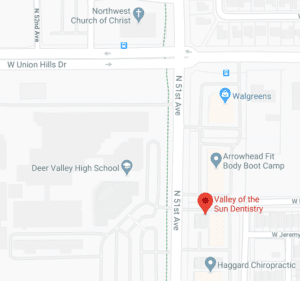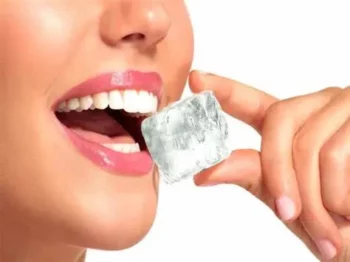
Chewing Ice and Your Teeth: That’s Good For Business
How does chewing ice negatively affect my teeth?
Today I want to talk about pagophagia (the compulsion to crave and chew ice) and how that affects your teeth. Ice can negatively affect your teeth because ice is hard and cold. These characteristics are obvious, but their effects on your teeth may not be.
At 32 degrees, water gets hard. When you chew on it, the hardness pushes on the teeth and can crack those teeth just from the force of it. At that temperature, it is about as hard as a piece of tin. The colder ice gets, the denser and harder it gets. At -90 degrees, ice has about the same hardness as quartz, which we do not recommend you chew on. And that is one way that chewing ice can hurt your teeth.
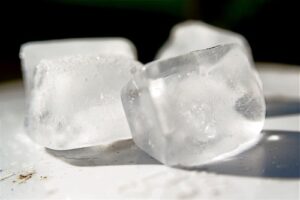
The other damage that ice can cause is just by the temperature of the ice. When you get ice on your tooth, it is going to get that tooth cold which causes it to shrink slightly. But it is not going to shrink the whole tooth evenly. Wherever the ice is touching will shrink faster and more than the rest of the tooth that is not touching the ice. Over time, this can cause micro cracks to form in the tooth. Those micro cracks will continue to get big as you continue to chew ice thousands of times over a period of years. Chewing ice is worse if your tooth has a filling as tooth structure contracts at a different rate than a filling material.
How can it be worse if I have a filling?
As seen in the picture below, this tooth has a silver filling. I want to point out that silver fillings are worse than the white fillings because silver conducts cold differently than enamel which causes silver fillings to expand and contract faster than white fillings. Every side of the tooth in the image below has a crack in the enamel.
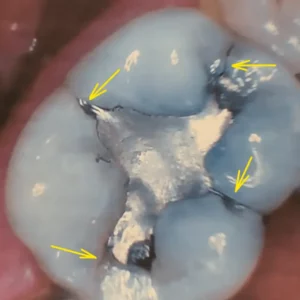
In the picture below, there is a crack coming down the side of the tooth clear down to the gum. If the tooth keeps cracking and that goes below the bone, we cannot fix that and need to take that tooth out and replace it. If there are cracks in your teeth, visit your local dentist as soon as you can so that your tooth may be saved.
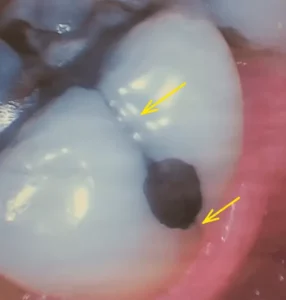
I know people are not likely to immediately stop compulsive behaviors such as chewing ice just because their dentist tells them it is a bad idea. If you feel the urge to chew on ice, there are some things you can do to minimize the damage caused by chewing ice.
What can I do to minimize the damage?
I recommend wait until the ice gets smaller and warmer. The warmer and smaller ice is, the less damage it will cause to your teeth. Another good thing to do is leaving the straw in your cup if you have one. Using a straw will limit the amount of ice and the size of ice you get to chew on.
AVOID CHEWING ICE STRAIGHT OUT OF THE FREEZER. Ice straight out of the freezer is so cold that you cannot see through them. If the ice you chew tends to pop when it comes in contact with water, you do not want to chew on those. These colder pieces of ice will speed up the tooth cracking process due to the more extreme difference in temperature and the increased hardness of the ice.
If you do chew ice and a piece of tooth breaks off or it gets sensitive, please REQUEST AN APPOINTMENT at our local Glendale, AZ office or give us a call at 602-942-4260.

